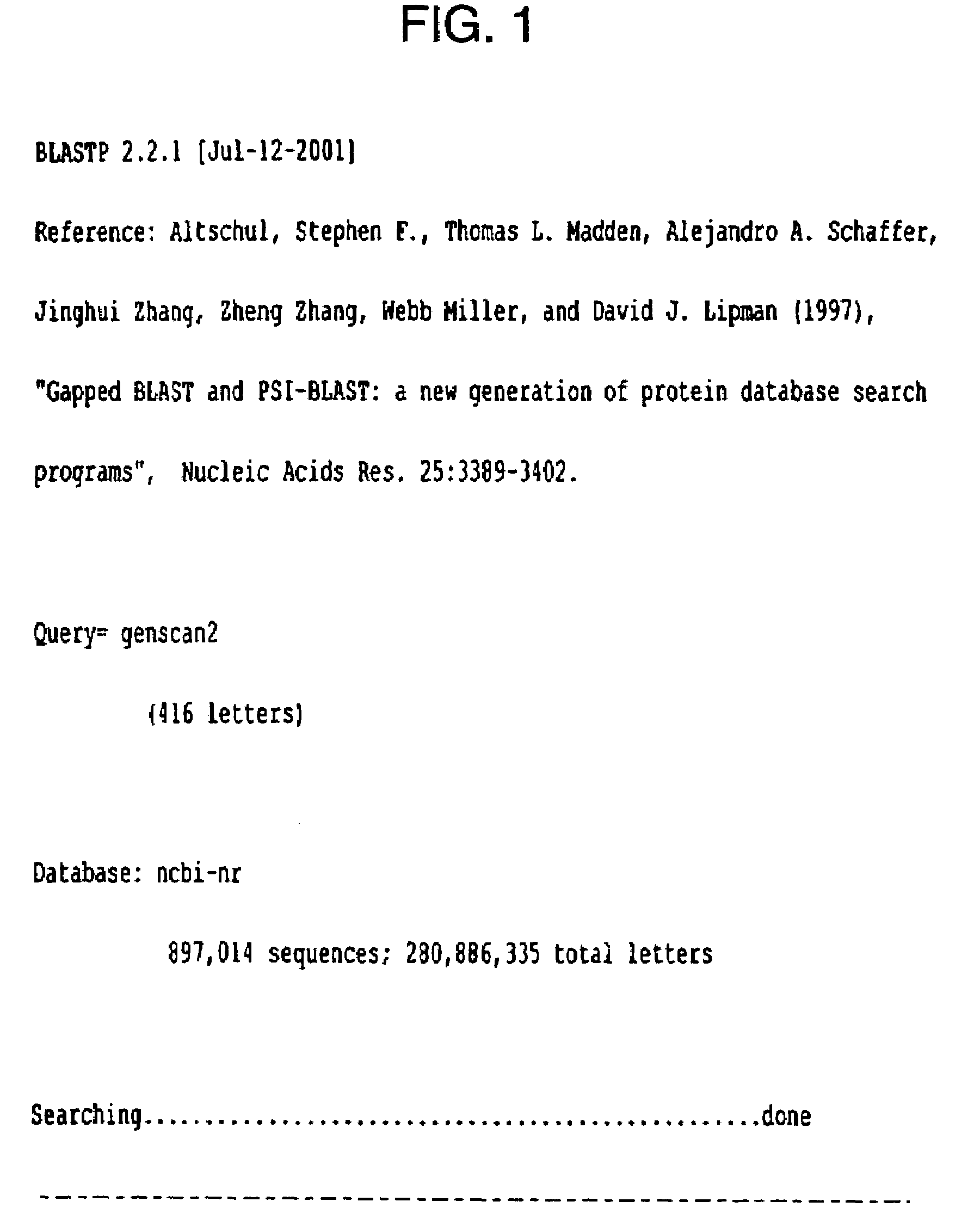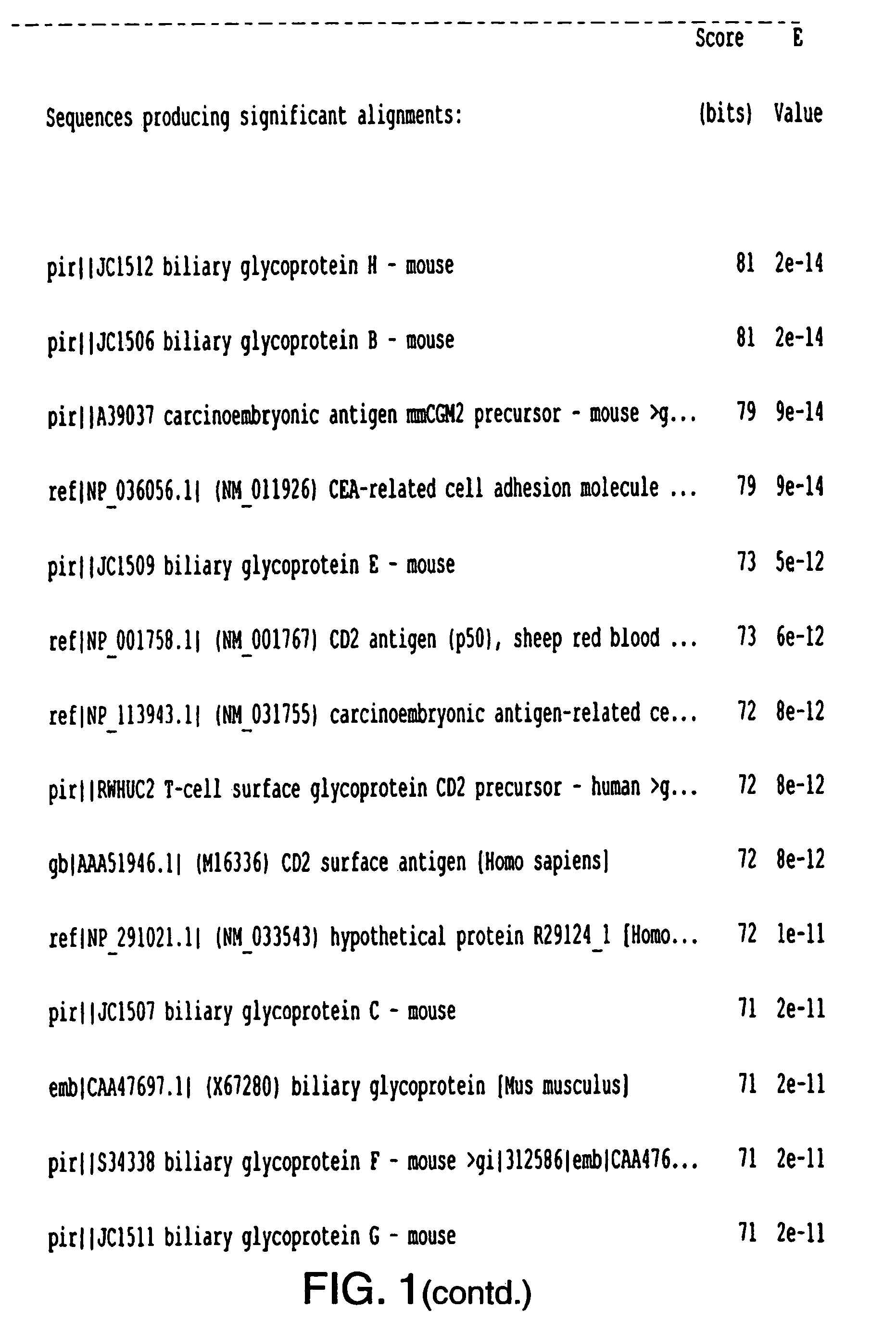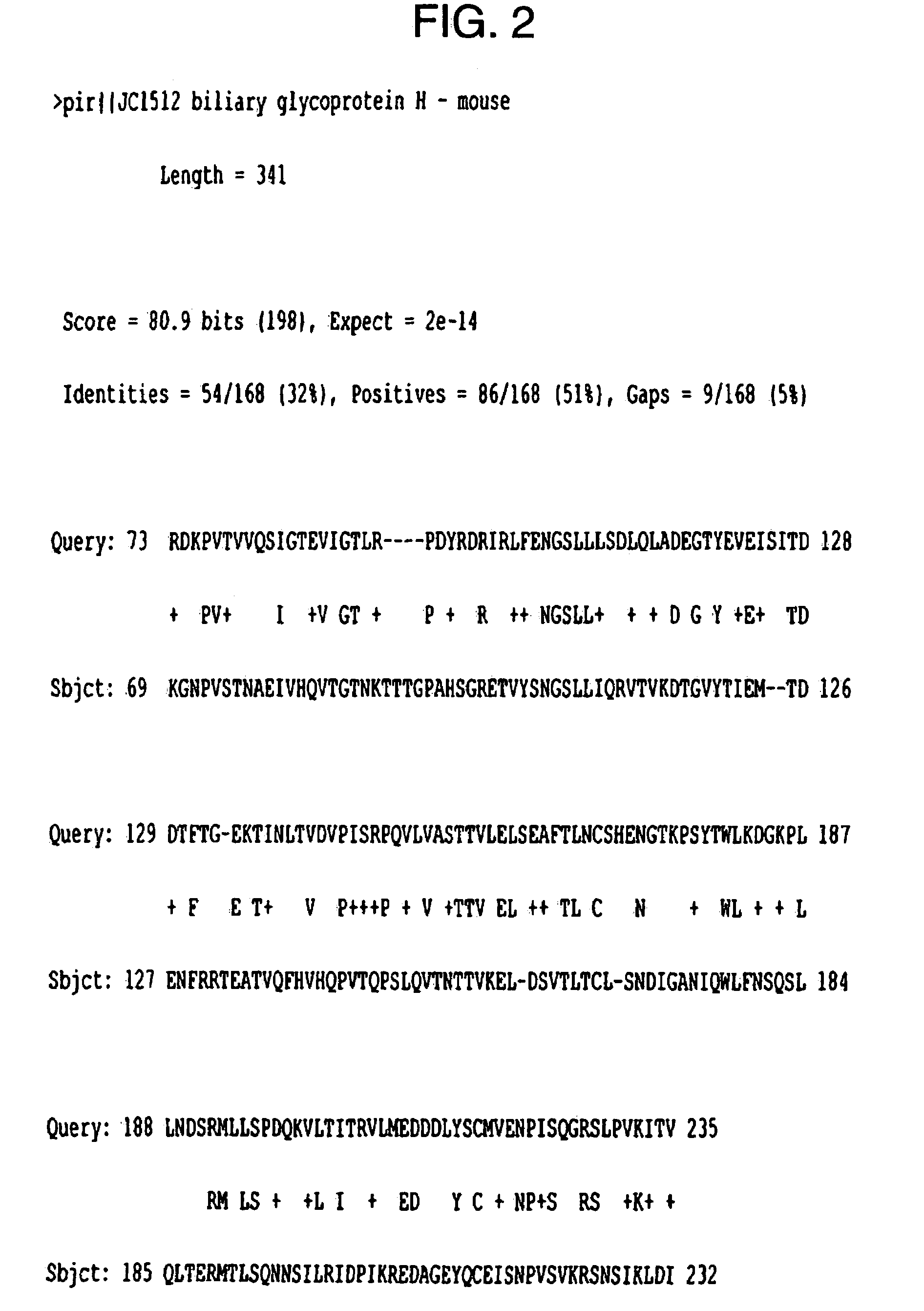Cytokine antagonist molecules
a cytokine and molecule technology, applied in the field of cytokine antagonist molecules, can solve the problem of inability to accurately predict proteins with a very low degree of sequence homology, and achieve the effect of simplifying the search for longer cdnas
- Summary
- Abstract
- Description
- Claims
- Application Information
AI Technical Summary
Benefits of technology
Problems solved by technology
Method used
Image
Examples
example 1
INSP052 and INSP055
[0280]The polypeptide sequence derived from combining SEQ ID NO:2, SEQ ID NO:4, SEQ ID NO:6, SEQ ID NO:8, SEQ ID NO:10, SEQ ID NO:12 and SEQ ID NO:14 and SEQ ID NO:16 which represents the translation of consecutive exons from INSP052 is derived from human genomic sequence. The polynucleotide and polypeptide sequences SEQ ID NO 17 and SEQ ID 18 representing INSP055 are polynucleotide and polypeptide sequences of the mouse orthologue of INSP052 respectively. The existence of a mouse orthologue supports the gene model for the human sequence INSP052.
[0281]INSP052 and INSP055 polypeptide sequences represented by SEQ ID NO 16 and SEQ ID NO 18, respectively, are predicted to contain signal peptide sequences and a transmembrane spanning domain.
[0282]The polypeptide sequence derived from combining SEQ ID NO:2, SEQ ID NO:4, SEQ ID NO:6, SEQ ID NO:8, SEQ ID NO:11, SEQ ID NO:12 and SEQ ID NO:14 and SEQ ID NO:16 which represents the translation of consecutive exons from INSP05...
example 2
Cloning of the INSP052 Extracellular Domain by Exon Assembly
[0286]The INSP052 full length prediction encodes a type I membrane protein of 416 amino acids, related to the VEGF / PDGF receptors, belonging to the immunoglobulin superfamily. The predicted nucleotide sequence, starting from the initiating ATG codon to the poly A tail is 2025 nucleotides long (FIG. 5). The coding sequence (cds) spans 7 exons (FIG. 6). A putative signal sequence (encoding amino acids 1-33) is located in exon 1. The sequence encoding the predicted transmembrane (TM) domain (amino acids 241 to 263) is located at the exon 3-4 boundary.
[0287]The extracellular (EC) domain encoding amino acids 1-240 was cloned by exon assembly from genomic DNA. An overview of the exon assembly method is summarized below:[0288]Individual exons 1, 2 and 3 were amplified from genomic DNA by PCR. The reverse primer for exon 3 also contained an 11 base overlap with the 5′ sequence of exon 4.[0289]Gel-purified exons were mixed and a 2nd...
example 3
Expression in Mammalian Cells of the Cloned, His-tagged INSP052-6His-V1 (Plasmid No. 13495)
[0301]Human Embryonic Kidney 293 cells expressing the Epstein-Barr virus Nuclear Antigen (HEK293-EBNA, Invitrogen) were maintained in suspension in Ex-cell VPRO serum-free medium (seed stock, maintenance medium, JRH). Sixteen to 20 hours prior to transfection (Day-1), cells were seeded in 2×T225 flasks (50 ml per flask in DMEM / F12 (1:1) containing 2% FBS seeding medium (JRH) at a density of 2×105 cells / ml). The next day (transfection d a y 0) the transfection took place by using the JetPEI™ reagent (2 μl / μg of plasmid DNA, PolyPlus-transfection). For each flask, 113 μg of cDNA (plasmid No. 13495) was co-transfected with 2.3 μg of GFP (fluorescent reporter gene). The transfection mix was then added to the 2×T225 flasks and incubated at 37° C. (5% CO2) for 6 days. In order to increase our chances to get more material, we repeated this procedure into two extra flasks such as to generate 200 ml to...
PUM
| Property | Measurement | Unit |
|---|---|---|
| volume | aaaaa | aaaaa |
| volume | aaaaa | aaaaa |
| volume | aaaaa | aaaaa |
Abstract
Description
Claims
Application Information
 Login to View More
Login to View More - R&D
- Intellectual Property
- Life Sciences
- Materials
- Tech Scout
- Unparalleled Data Quality
- Higher Quality Content
- 60% Fewer Hallucinations
Browse by: Latest US Patents, China's latest patents, Technical Efficacy Thesaurus, Application Domain, Technology Topic, Popular Technical Reports.
© 2025 PatSnap. All rights reserved.Legal|Privacy policy|Modern Slavery Act Transparency Statement|Sitemap|About US| Contact US: help@patsnap.com



